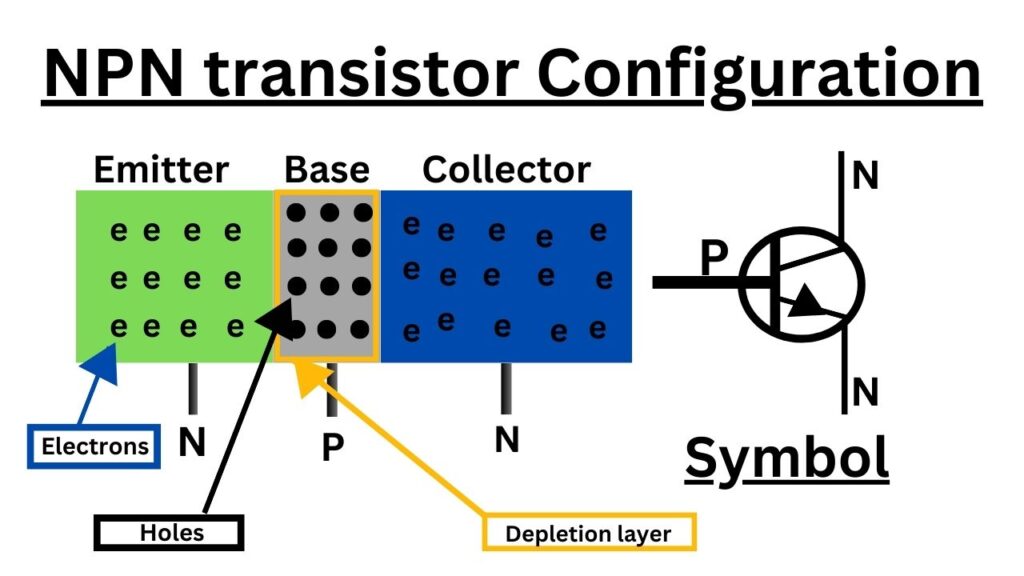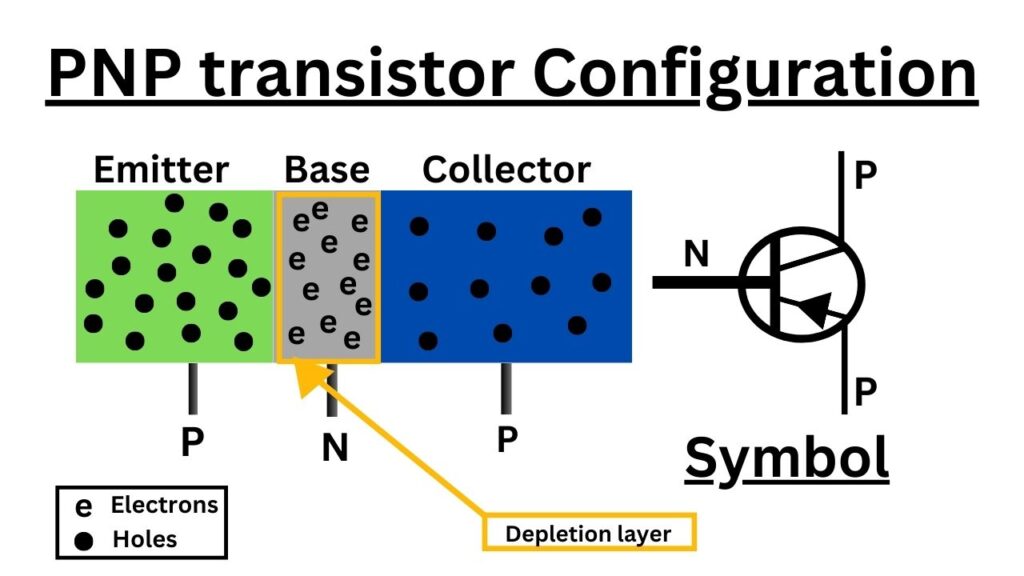Table of Contents
Introduction
Transistors play a very important role in modern electronics. Transistors are used for amplifying the signal, switching circuits etc. Transistors work similarly to water taps, when we open the tap then water flows through the tap. Similarly, when we provide a small voltage to the base terminal the transistor is switched on and the current flows from the collector to the emitter terminal. Today, transistors are used in every electronic gadget including smartphones, tablets, laptops, smartwatches etc.
What is a transistor?
Transistors are the fundamental electronic component made up of semiconductor material basically silicon. Transistors are used in various applications including amplification and switching. Transistors are actually made from the combination of two diodes.
Types of transistors
Transistors are of two types:
- BJT ( Bipolar Junction Transistors)
- FET ( Field Effect transistors)
Bipolar Junction Transistors (BJT)
These types of transistors are used to control the flow of electric current. These types of transistors are commonly used in electronic circuits.
BJT ( Bipolar Junction Transistors ) are of two types:
- NPN type
- PNP type
NPN type: (Negative-Positive-Negative)NPN terminal type BJT are most commonly used transistors. In NPN type transistors base is P-type which sits between N-type emmitor and N-type collector.
PNP type: (Positive-Negative-Positive)PNP terminal type BJT are used rarely. In PNP type transistors base is N-type which sits between P-type emmitor and P-type collector.
Field Effect Transistors (FET)
FET( Field Effect Transistors) are used to control the flow of electrical current. It has three terminals Source, Gate and Drain terminal.
Source terminal: It is a terminal where current enters the device.
Drain terminal: It is a terminal where current exists.
Gate terminal: It is a terminal which is used to control the flow of current between the source and drain terminal.
These are the voltage controlled devices means that the voltage applied to the gate terminal determine the conductivity of the channel.
Types of channels in FETs:
- N-channel
- P-channel
Types of FETs:
- MOSFET(Metal Oxide Semiconductor Field Effect Transistor)
- JFET(Junction Field Effect Transistor)
MOSFET: They are widely used in digital and analog circuits. They are of two types: N-MOS and P-MOS. They are further divided into enhancement mode and depletion mode MOSFETs.
JFET: JFET are the voltage controlled devices. They operate based on the voltage applied to the gate
Transistors Working
Transistors work similar to water tap. When water tap is rotated then water come out from tank. Similarly, when we provide some voltage to base terminal of the transistor, then current flows from collector terminal to emitter terminal which completes the circuit.
Identification of NPN and PNP transistors
To identify the NPN and PNP transistors you must have digital Multi-meter.
Set digital multi meter to continuity mode. Now connect red wire of multi-meter to one of the end of transistor and connect black wire to other ends one by one, if it shows some reading after connecting to other terminals of transistor then it is NPN transistor.
If above steps don’t works then fix the black wire of multi meter to one end and connect the red wire to other two ends, if it shows some reading while connecting to both the ends then it is PNP transistor.
How to identify base, emitter and collector?
The transistor terminal where multi-meter wire is fixed while identifying NPN or PNP transistor it is the base terminal. It is lightly doped, means that a very few holes exist in this region.
The terminal which shows highest reading while checking through multimeter it is Emitter terminal. It is heavily doped, means that excess electrons present here.
The terminal which shows lowest reading while checking through multi-meter it is Collector terminal. It is moderately doped, means that few excess electrons exists here.
How transistors are made?
Transistors are made by joining two p-n junctions in NPN or PNP manner. If two p-n junction joins and positive (holes) are in middle then it is NPN transistor. Similarly, if two p-n junction joins and negative(electrons) are in middle then it is PNP transistor.


When we connect battery to emitter and base of NPN transistor, then battery pushes the electrons in emitter region to move towards the base region. A very small voltage upto 0.7V is needed to turn on the transistor. When transistor is turned ON, then current form collector region move through the emitter region, which turns on the load (bulb) connected to it.
Concept of gain in transistor
In transistors, gain refers to the ability of the device to amplify an input signal. It quantifies the degree of signal amplification achieved by the transistor. Gain is a crucial characteristic as it determines how much the output signal is enhanced in amplitude compared to the input signal. The gain of a transistor is denoted by the symbol “hfe” for Bipolar Junction Transistors (BJTs) or “β” (beta).
There are two main types of gain associated with transistors:
- Current Gain (hfe or β):
- Current gain represents the ratio of the output current (collector current, for example) to the input current (base current). It is denoted by the symbol “hfe” for BJTs. A higher current gain indicates better amplification capabilities.
- Voltage Gain:
- Voltage gain is a measure of how much the voltage of the output signal is amplified concerning the input signal. It is a product of both the current gain and the impedance of the transistor and the connected circuit elements.
The gain of a transistor is a critical factor in designing electronic circuits. Engineers choose transistors with specific gain characteristics based on the requirements of the circuit they are working on. Whether in audio amplifiers, radio frequency circuits, or digital applications, understanding and controlling gain is essential for achieving the desired performance and functionality.
Future trends and possibilities
The future of transistors is marked by a convergence of advancements in quantum computing, material science, energy efficiency, and interdisciplinary collaborations.
